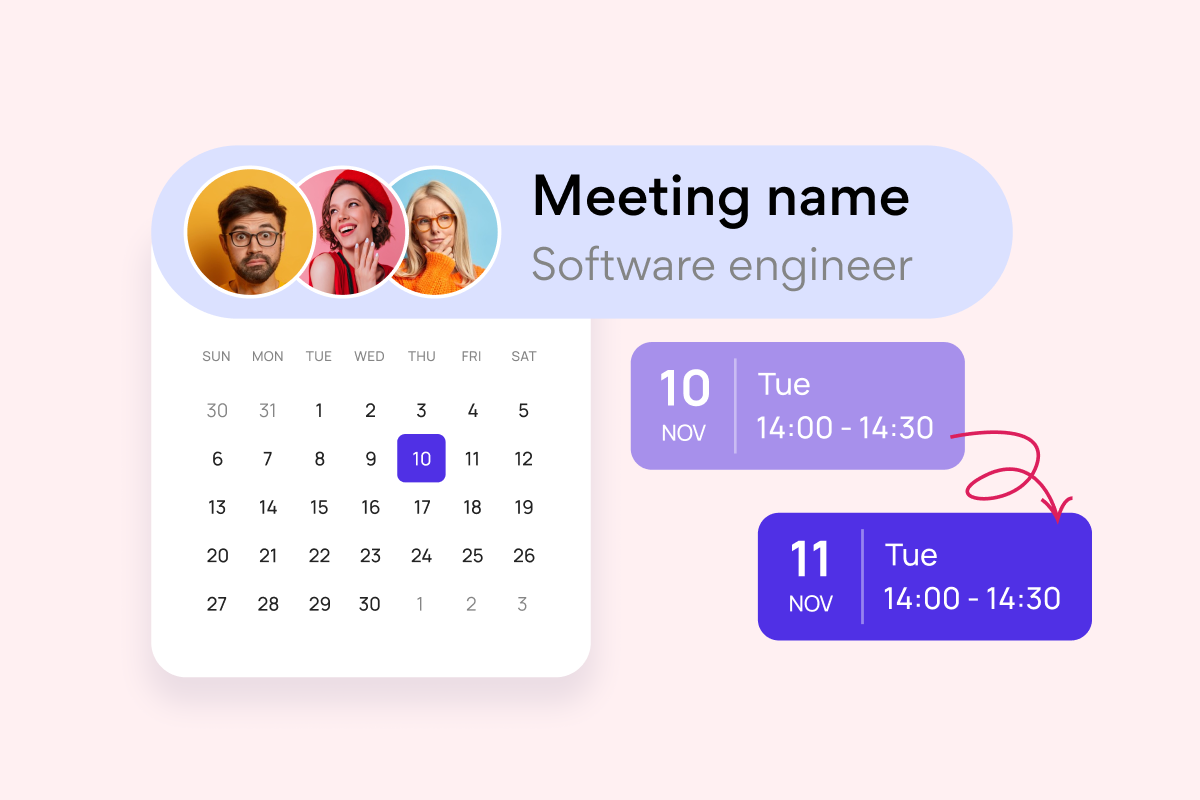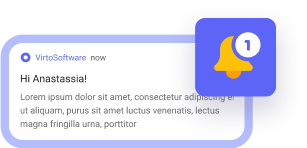Ever felt like your content strategy is a puzzle with missing pieces? A content calendar is the missing link that brings everything together—social media posts, blog articles, videos, and more. It’s your roadmap to creating a cohesive content plan that resonates with your audience and drives real results.
Whether you’re a small business or a large marketing team, a content calendar helps you stay organized, avoid last-minute scrambles, and focus on what matters most—crafting compelling content. It’s not just about scheduling; it’s about telling a consistent story across all your platforms.
In this article, we’ll explore the benefits of using content calendar apps and highlight the top content calendar software to help you create and manage one. These tools are designed to boost your team’s productivity, streamline your workflow, and make planning a whole lot easier. So, let’s dive in and learn how to turn your content strategy into a well-oiled machine!
What is a Content Calendar and Why is it Needed?
A content calendar is a powerful tool that helps you plan, track, and publish content across various platforms on specific timelines. It’s not just a schedule; it’s a strategic plan that outlines themes, formats, and responsibilities, ensuring that your content aligns with your marketing goals.
How a content calendar works
Whether you’re a small team or a large corporation, content calendar software can streamline your workflow. For instance, a small marketing team might use it to coordinate blog posts and social media updates, while a larger company could use it to manage multiple campaigns across different departments.
Benefits of using content calendar tools
A content calendar offers several benefits:
✔️Simplifies planning: it helps organize your content strategy, making it easier to plan ahead and avoid last-minute scrambles.
✔️Guarantees consistency: by scheduling content in advance, you maintain a consistent tone and style across all platforms, which is crucial for building brand identity.
✔️Boosts productivity: with a clear plan, you can focus on creating high-quality content rather than wasting time on unplanned posts.
✔️Saves time: it saves time by automating tasks and ensuring that all team members are on the same page.
✔️Improves team collaboration: a shared calendar strengthens communication among team members, ensuring everyone knows their roles and deadlines.
Achieving business goals with a content calendar
Content marketing calendar software helps you achieve your business objectives by ensuring that your content strategy is aligned with your overall marketing goals. It allows you to plan content around key events, product launches, or seasonal promotions, maximizing engagement and conversions. By using a content calendar, you can track the effectiveness of your content, adjust your strategy based on data, and ultimately drive more traffic, leads, or sales.
Popular Content Calendar Software
When it comes to planning and managing content, having the right content calendar tools can make all the difference. Here are some popular best content calendar tools options that can help you streamline your content workflow:
Trello
Trello is a simple yet visually appealing tool for managing projects and creating content calendars. Although it’s not a traditional calendar, its flexible boards and cards are perfect for visual content planning. Here are some of its key benefits:
- Visual organization: use lists, cards, and boards to organize and track content progress.
- Custom notifications: set reminders to stay on top of deadlines.
- User-friendly interface: easy to navigate, even for those new to project management.
- Integration with other tools: works seamlessly with Slack, Google Drive, and more.

CoSchedule
CoSchedule is a powerful platform that combines content calendar features with built-in analytics for managing marketing campaigns. It allows you to plan, publish, and track content across all channels. Here are some of its standout features:
- Cross-platform content management: plan, create, and publish content on blogs and social media, while tracking results.
- Integration with social media and other tools: includes integration with WordPress via a plugin.
- Comprehensive analytics: offers insights to optimize your content strategy.

Airtable
Airtable is a versatile platform that combines the features of spreadsheets and databases, allowing you to create customizable content calendars. Here are some of its key advantages:
- Custom views and attachments: create tailored views, add attachments, track content plans, assign tasks, and monitor deadlines.
- Project and team customization: tailor your content view by project and team.
- Advanced settings and integrations: supports complex setups and integrates with numerous third-party services, making it ideal for large projects and diverse content teams.
- Content planning templates: offers templates for content planning and calendars.

Virto Calendar App for Microsoft Teams and M365
The Virto Calendar App is a convenient platform for managing content within the Microsoft Teams and M365 ecosystem. It allows you to create, customize, and manage team calendars, facilitating collaboration and task organization. Here are some of its benefits:
- Integration with SharePoint and M365 Apps: centralized event management and seamless collaboration.
- Content planning and visualization: easy planning and visualization of content.
- Collaboration and task automation: supports team collaboration and automates tasks.
- Customizable categories and tags: plan and track content using customizable categories, tags, and views in Microsoft Teams.

Virto Kanban Board App for Microsoft Teams and M365
The Virto Kanban Board App also enables content planning with a visual twist. Here are some of its advantages:
- Task visualization: organize content into Kanban board cards for clear workflow tracking and status updates.
- Flexibility: adapt the board to fit any process, such as publication planning, task management, and team coordination.
- Integration with Microsoft Teams and M365: direct interaction with your team in one interface, simplifying communication and collaboration.
- Process automation: set up automatic reminders and notifications to meet deadlines effectively.

Google Sheets
Google Sheets is a flexible and free solution for those looking for a simple tool to create a content calendar. Here are some of its benefits:
- Customization: can be tailored to fit any task.
- Ease of use: simple to use, even for beginners.
- Real-time collaboration: teams can work together in real-time.
- Limitations: while versatile, it lacks some advanced features compared to dedicated content calendar tools.

Each of these content calendar tools offers unique features that can improve your content planning process.
👉What is the best tool to create content calendar? The best content calendar platform depends on your needs:
- Google Sheets/Trello – Simple and free.
- Notion – Customizable all-in-one planner.
- Hootsuite/Buffer – Automates scheduling.
- Sprout Social/CoSchedule – Great for teams and analytics.
For basic planning, Google Sheets or Trello work well. For automation, go with Hootsuite or Buffer.
👉Find more details about social media content calendars in our recent guide for organizing and scheduling posts effectively – it won’t disappoint!
Explore Our Use Cases for Content Calendar Software
Choosing the Right Content Calendar Software for Your Team
When it comes to selecting the perfect content calendar software, there are several key factors to consider. Here’s how to make the best choice for your team:
Key considerations
- Team Size
How many people will be using the tool? This affects the complexity and cost of the software.
- Integration needs
Do you need it to work seamlessly with other platforms you use, like social media or project management tools?
- Content type
Are you managing blog posts, social media updates, videos, or a mix of everything?
Recommendations for different users
Here are some tailored suggestions based on your team’s needs:
Small teams ➡️ Google Sheets or Trello are great options.
They’re easy to use, flexible, and won’t break the bank. Google Sheets is perfect for simple, collaborative planning, while Trello offers a visual approach that’s hard to beat.
Large teams in the Microsoft 365 ecosystem ➡️Virto Calendar App and Virto Kanban Board are ideal.
They integrate beautifully with Microsoft Teams and SharePoint, making them perfect for teams already working within this ecosystem. They offer robust features for managing complex content workflows and team collaboration.
Marketing agencies ➡️CoSchedule is a top choice.
It’s designed for managing multiple campaigns across different channels, offering advanced analytics to help optimize your strategy.
Teams needing flexibility ➡️ Airtable is a great option.
It’s highly customizable, allowing you to create a content calendar that fits your unique needs and integrates well with other tools.

By considering these factors and recommendations, you can find a content calendar app that fits your team like a glove, making your content planning process smoother and more effective.
Improve Your Productivity with Virto Apps
Virto Calendar
Consolidate events from SharePoint, Exchange, Google, and more into one calendar view for simplified planning.
Virto Kanban Board
This tool transforms team collaboration through visual task management for consistent stage-by-stage progress.
Virto Alerts & Reminder
Integrated within your daily tools like Microsoft Teams, the app ensures you stay ahead of all tasks and meetings.
Creating a Content Calendar
Creating a content calendar is a straightforward process that can help you organize your content strategy. Here’s a step-by-step guide to get you started:
Step 1: Define your content goals
Before diving into creating a calendar, it’s essential to understand what you want to achieve with your content. Are you looking to improve SEO, boost engagement, or drive sales? Knowing your goals will help guide your entire strategy.
Step 2: Choose your calendar format
Decide how you want to manage your calendar. You can use:
- Spreadsheets like Google Sheets or Airtable for a customizable approach.
- Specialized apps like CoSchedule or Trello for a more structured workflow.
- Collaboration platforms like Microsoft Teams with Virto Calendar for seamless team integration.
Step 3: Develop your content strategy
Identify the types of content you’ll create (blog posts, social media updates, videos) and when they’ll be published. Develop categories and themes for your content to ensure it’s cohesive and engaging.
Step 4: Fill out your calendar
Populate your calendar with tasks and set specific publication dates. Assign responsibilities to team members for each content piece. This ensures everyone knows their role and deadlines.
Step 5: Review and adjust
Regularly review your calendar to make sure everything is on track. Make tweaks as needed based on performance data or changes in your strategy.

By following these steps, you can create a content calendar that helps you stay organized and focused on your goals. It’s not a one-time task; it’s an ongoing process that requires regular updates to keep your content fresh and relevant.
👉How do you create a content calendar? To create a content calendar:
- Set Goals – Define what you want to achieve.
- Pick Platforms – Choose where to post.
- Plan Content – Mix formats (videos, blogs, promos).
- Schedule Posts – Optimize timing for engagement.
- Use Tools – Organize with Google Sheets, Trello, or Hootsuite.
- Create & Automate – Design, write, and schedule in advance.
- Track & Improve – Analyze and adjust for better results.
Virtosoftware Products – The Ideal Choice for Content Planning
For teams working within the Microsoft 365 and Microsoft Teams ecosystem, Virtosoftware products offer a seamless solution for managing content plans. Here’s why they stand out:
Virto Calendar App for Microsoft Teams and M365
The Virto Calendar App changes everything for Microsoft 365 users. It allows you to centralize your scheduling, integrating multiple calendars into a single, intuitive view. This includes SharePoint lists, Outlook calendars, and even external calendars like Google Calendar.
The benefits are clear:
- Unified scheduling: simplify planning and coordination across projects and teams.
- Seamless integration: works natively with Microsoft 365, ensuring consistency in security and user experience.
- Adaptability: handles all calendar-related scenarios, from project management to simple scheduling.

For Teams users, check out the Virto Calendar App for Microsoft Teams. If you’re working with SharePoint Online or M365, explore the Virto Calendar App for SharePoint Online & Microsoft 365.
Virto Kanban Board App for Microsoft Teams and M365
The Virto Kanban Board App takes content planning to the next level by visualizing workflows and task distribution. Here’s how it helps:
- Visual workflow management: organize content tasks into Kanban board cards, making it easy to track progress and status updates.
- Task distribution: assign tasks clearly, ensuring everyone knows their responsibilities.
- Flexibility: adapt the board to fit any process, whether it’s publication planning, task management, or team coordination.
- Integration: works directly within Microsoft Teams, simplifying communication and collaboration.

Teams users can try the Virto Kanban Board App for Microsoft Teams, while SharePoint users can explore its functionality through Virto Kanban Board for SharePoint Online. Moreover, Virto Kanban Board is available for SharePoint on-premises users.
Solving content planning challenges
Virtosoftware products address specific challenges in content planning:
- Disorganized scheduling: Virto Calendar App consolidates multiple calendars, ensuring that all events and tasks are in one place.
- Complex task management: Virto Kanban Board App simplifies task tracking and assignment, providing a clear visual overview of workflows.
- Integration issues: both tools integrate seamlessly with Microsoft 365 services, eliminating the need to switch between platforms.
Final Thoughts
In summary, using a content calendar offers numerous benefits, including better organization, time savings, consistency in content publication, and improved team collaboration. It allows you to plan strategically, ensuring that your content aligns with your marketing goals and resonates with your audience.
Choosing the best content calendar software is crucial for successful planning. The tool should fit your team’s needs, whether it’s for managing social media posts, blog articles, or video content. By selecting the appropriate software, you can streamline your workflow and boost productivity.
Implementing content calendar software can significantly strengthen your workflow and productivity. It helps you focus on creating high-quality content while automating routine tasks, ensuring that your content strategy is executed efficiently.For teams working within the Microsoft 365 ecosystem, Virto Calendar App and Virto Kanban Board App are excellent choices. These tools offer seamless integration, visual workflow management, and task automation, making them ideal for organizing and managing content effectively. Consider trying Explore Virto Calendar App for Microsoft Teams and Virto Kanban Board App for Microsoft Teams, or check out their versions for SharePoint Online & Microsoft 365 (Virto Calendar App & Virto Kanban Board App) to find the perfect fit for your team.










